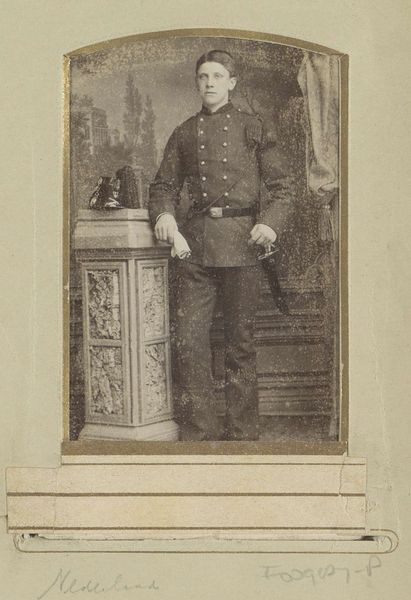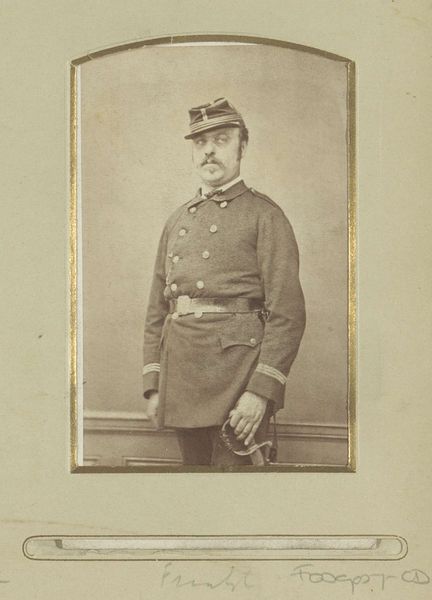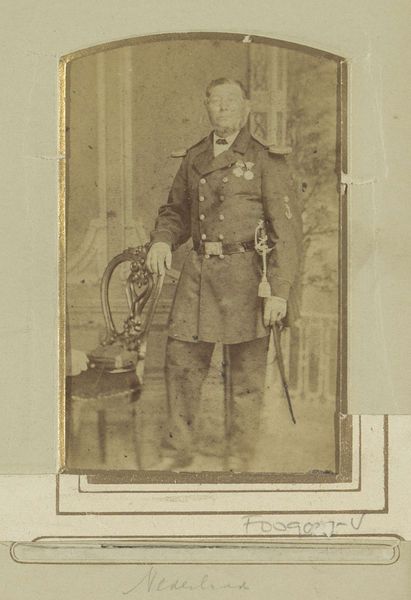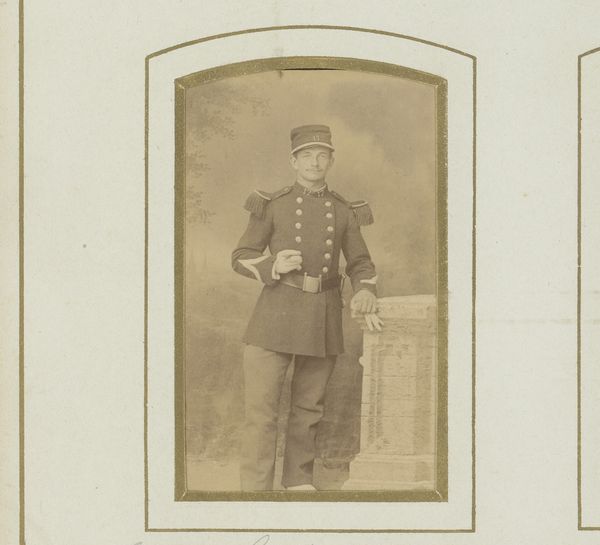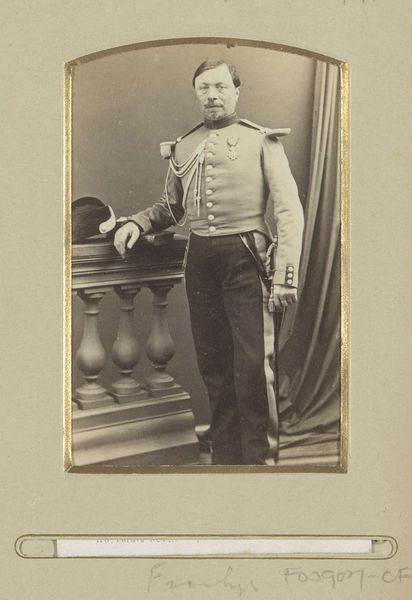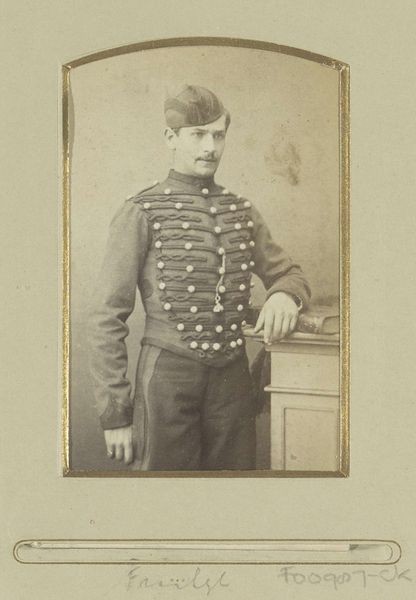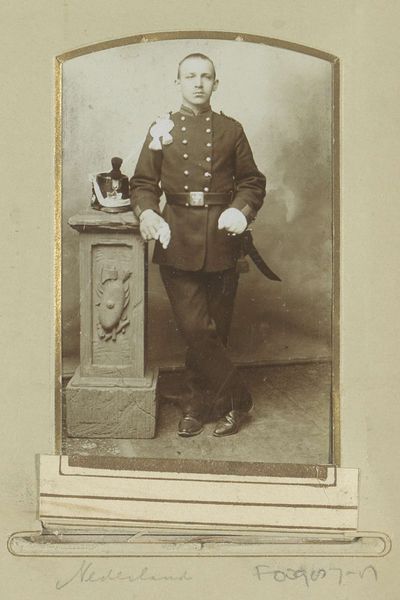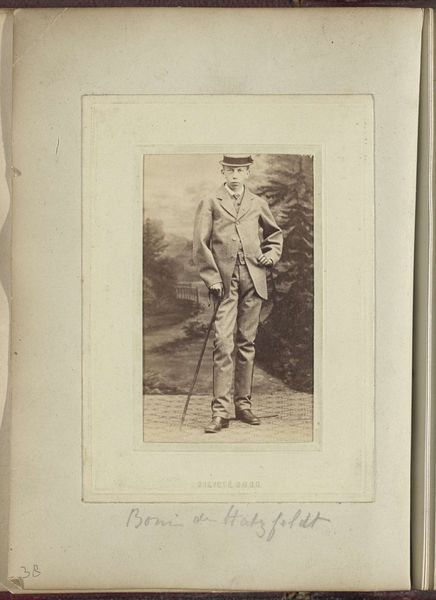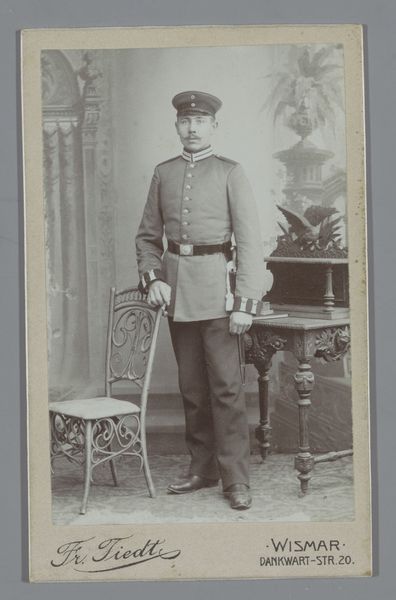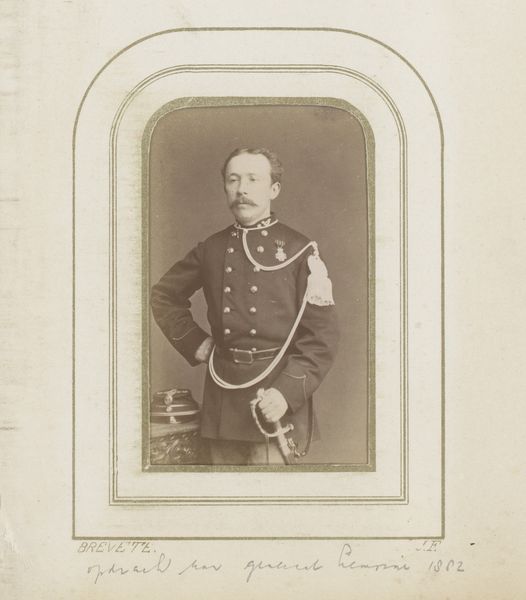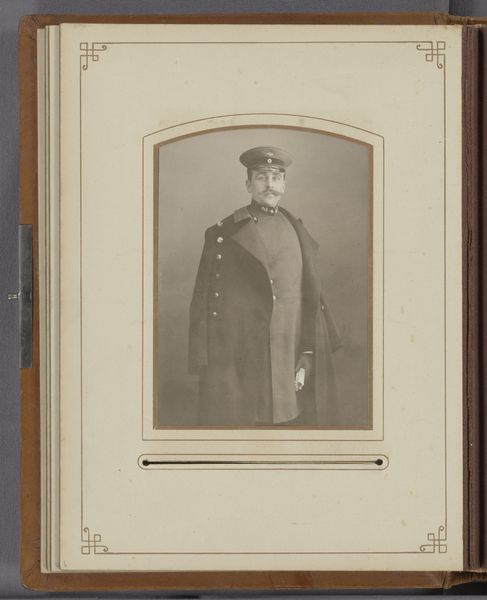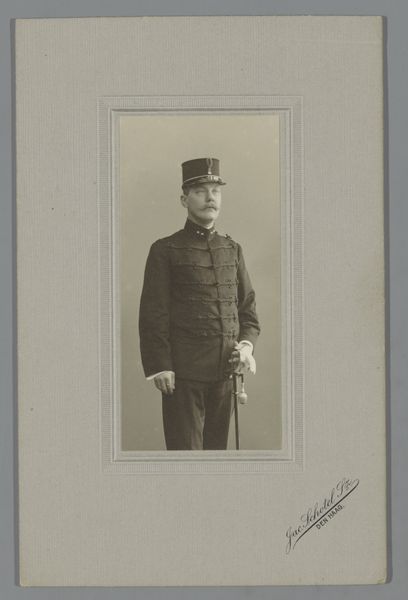
Portret van een (vermoedelijk) Franse militair, staand bij een fauteuil met sabel c. 1870 - 1900
0:00
0:00
photography, albumen-print
#
portrait
#
photography
#
genre-painting
#
albumen-print
#
realism
Dimensions: height 163 mm, width 108 mm
Copyright: Rijks Museum: Open Domain
Curator: This albumen print from circa 1870-1900, attributed to Jules Alexandre Joseph Delzor, offers us a glimpse into the world of a presumed French military man. The gentleman stands rigidly next to an ornate chair, clutching his saber. What strikes you about this photograph? Editor: It's remarkably still, almost somber. The muted tones enhance a sense of reserve and formality. I'm drawn to the sharp vertical lines formed by his body and the saber. How does this relate to the subject? Curator: Military portraiture often served a function beyond mere representation, communicating power and national identity. In post-Franco Prussian war France, national identity was a popular topic. Do you agree with the assessment? Editor: Definitely, though perhaps in a more subdued way here. The Realist aesthetic, shunning idealization, captures a sense of gravity that might be linked to France's recent conflict and perhaps the anxieties around this period. Note, however, that it is just an assumption given the ambiguity around the location and name! The neutral background ensures no distraction from the main topic. Curator: Precisely, that stripped down visual approach invites consideration on social stratification during the belle epoque and colonial administration - things he likely participated in either directly, or indirectly by representing his country, which in turn shaped public consciousness at the time. Editor: It's all beautifully managed to enhance the core qualities and emotions around the sitter! This formal pose highlights structure above all, but is clearly saying something more than what initially appears. Curator: True. What first appeared to me as simple formality, now feels laden with the complexities of its era, particularly considering what photography represented for both individual expression and national narratives in the 19th century. Editor: Absolutely. Seeing beyond just what is physically manifest on its surface enriches the aesthetic of even seemingly standard Realist compositions such as this one.
Comments
No comments
Be the first to comment and join the conversation on the ultimate creative platform.
